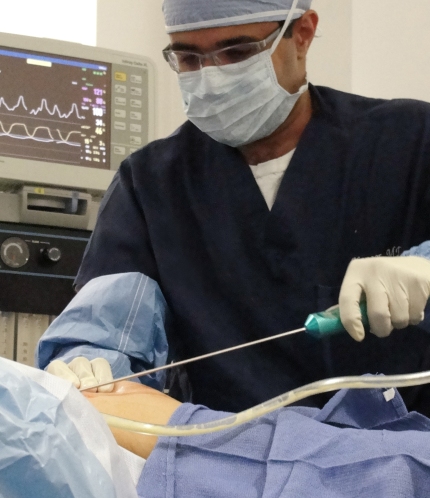Scientists have discovered that tiny particles of gold injected into fat tissues can offer a new and potentially safer way to carry out liposuction procedures. Liposuction by definition is the process of removing excess fat found underneath the skin by suction. Although liposuction has a reputation as a low risk cosmetic surgery, this procedure is not without its problems. One of the primary problems stems from the fact that fat is not an isolated feature of the body. Simply put, nerves and other closely located tissues may be removed along with the fat. Recent research shows that gold nanoparticles may be the solution to this problem. Problems associated with liposuction deserve some attention, as this is one of the most commonly performed cosmetic surgeries and people ranging from ages twelve to eighty-seven have had this procedure.

The key to the utility of gold nanoparticles is their ability to heat up when exposed to electromagnetic waves. Gold nanoparticles can be heated very easily using infrared light, a form of electromagnetic radiation that can penetrate directly through skin. Therefore, the proposed procedure would involve injecting the nanoparticles into the selected fat that is scheduled to be removed. Surgeons will then illuminate the area of skin above the fat tissue with infrared light, which will pass through the skin and be absorbed by the gold nanoparticles. When this happens, the nanoparticles warm up. Using infrared light, the nanoparticles can be heated to the point where they actually melt the fat that surrounds them. At this point there is no need to worry about nerves and connective tissue being overly heated and damaged because the temperature at which fat melts is lower than the temperature at which the nerves and connective tissue get damaged. Following this procedure, the melted fat is removed using suction techniques that have already been established. This allows for the selective melting and removal of the unwanted fat, but leaves the sensitive connective tissue and nerves untouched.
This technique of liposuction is still being tested on animals. However, the results are already promising. The next step is to carry out these tests on human subjects. If all goes according to plan, this new method of liposuction is expected to be implemented in the year 2017.
This research does leave me wondering about a few things. Will the decrease in cost associated with reduced complications be offset by the increase in cost associated with using a metal as precious as gold? And will there be any gold nanoparticles left behind in the tissue, or will those all be removed with the fat? I’m looking forward to seeing these questions answered in the years ahead.

No mention of plasmonics (ie why the gold particles are good at absorbing heat)?
Nope 😉 The hardest part of writing stories is deciding what to leave out. Stay tuned in a future post for sure, unless you’d like to elaborate here!